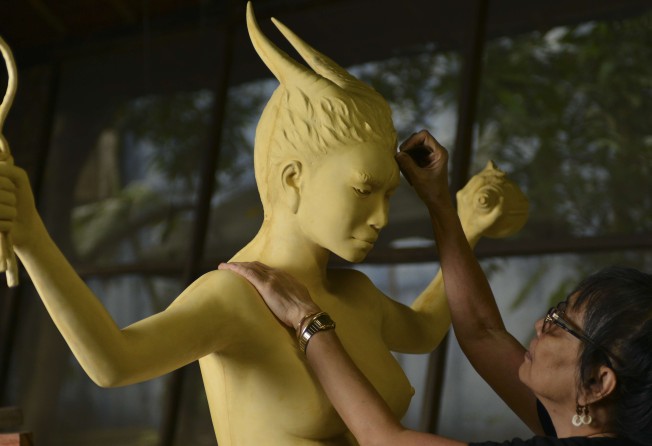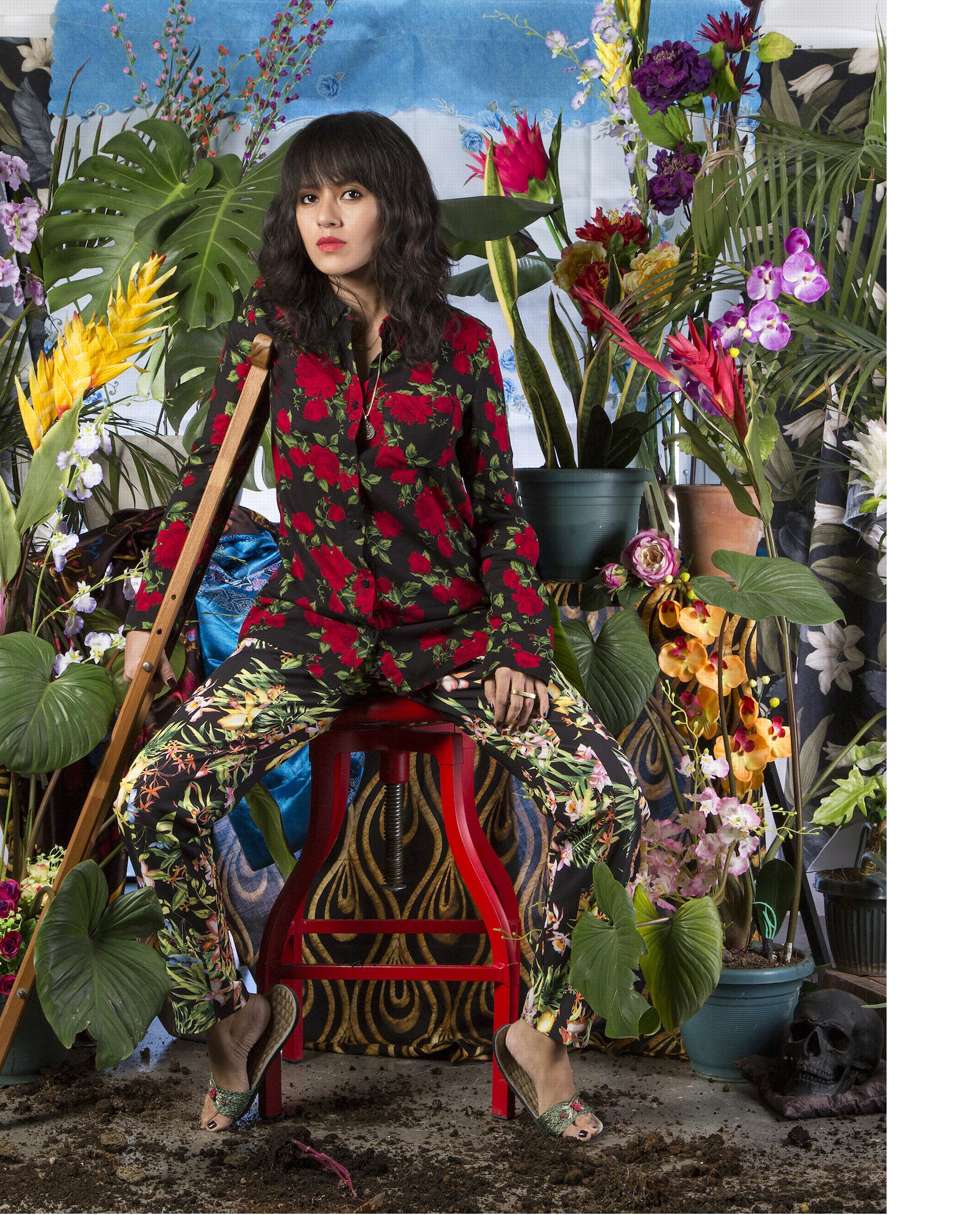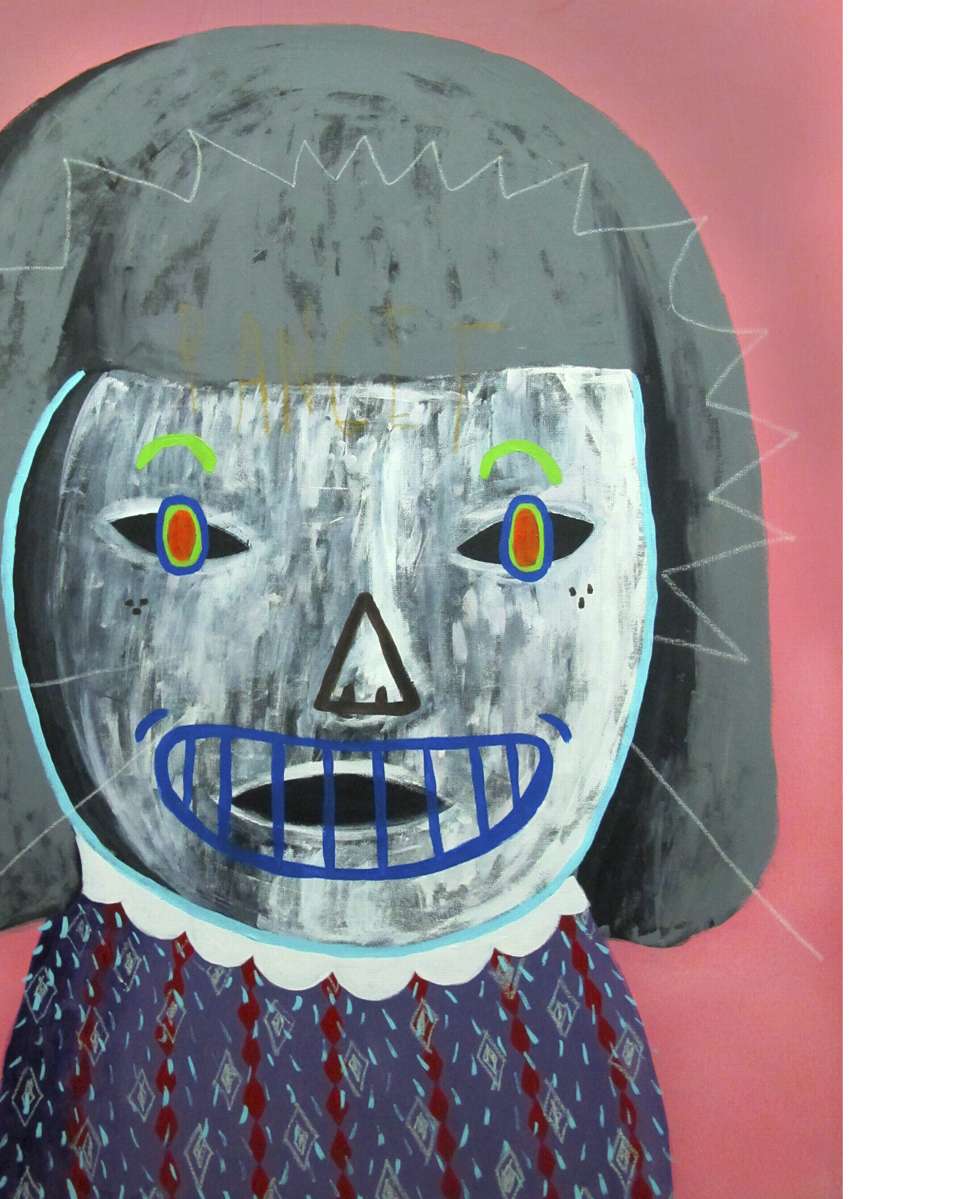
Contemporary art taking off in Philippines as galleries host more visitors and collectors take a global view
Last month’s Art Fair Philippines exemplified a trend seen throughout Manila, where galleries, non-profit art spaces and museums are taking bold risks and forging ahead with a more worldly perspective

At the opening of Art Fair Philippines in Manila last month, a young sound artist named Jon Romero was using an overseas visitor to conduct electricity between metal sheets. Each time Romero tapped on the visitor’s arm, the electrical charge created a sound. Romero began playing the visitor like an instrument.
“It’s the electricity flowing into the skin that makes the sound,” explains Romero. “I call this work a sound bridge – we have a connection with each other, with our surroundings, with our environment.”
Romero is part of a Manila-based collective of artists called WSK that was invited by the art fair to create a room of immersive, interactive sound installations.
“Part of what we want to do is to expand the awareness of the local audience towards all kinds of contemporary art,” says Trickie Lopa, who founded the fair five years ago with Lisa Ongpin-Periquet. “That installation – I don’t think anyone would have taken them seriously five years ago, but now we have more younger artists venturing into non-traditional areas like sound art.”

That was evident throughout the fair, which took place inside a multi-storey car park in the lively Makati shopping district. But the trend can also be seen throughout Manila, where galleries, non-profit art spaces and museums are taking more risks than ever before – and forging ahead with a new, more cosmopolitan outlook.
“The art market here in Manila is really growing,” says Bigboy Cheng, the founder of Secret Fresh, a punchy gallery that has evolved beyond its initial focus on street art and collectible toys. At the art fair, Secret Fresh paired the multilayered portraits of Lynyrd Paras and the provocative neon-hued paintings of Yeo Kaa with a newly commissioned series of pop art figurines by BenCab (Benedicto Reyes Cabrera) – a venerable painter who was named a National Artist by the Philippine government in 2006. It was a remarkable departure from his normally more reserved work.
“I want to show that everyone can get together – new artists as well as veteran artists,” says Cheng. “So many galleries only show one or the other but we need to see both.”
Lopa says that reflects a general expansion of the art scene in Manila, even if the basic infrastructure remains the same.
“I don’t know if there are that many more galleries, but there are many more people visiting them,” she says.
Private institutions such as the Ayala Museum have taken a more international outlook by featuring more overseas artists, while public stalwarts such as the National Museum have “beefed up” their programmes with what Lopa says are higher-quality exhibitions, which have benefitted from strong attendance since the museum eliminated entrance fees.

The fair has almost certainly had an impact, too. Since its inaugural edition in 2013, the number of participating galleries has grown from 23 to 46, while the number of visitors surged from 6,000 to more than 22,000 last year. The fair now anchors a week of public installations, gallery openings and museum exhibitions – similar to the surge of activity that takes place each March around Art Basel Hong Kong.
When Lopa started the fair, she initially planned to feature only Filipino artists. But collectors surprised her by expressing more and more interest in overseas artists. At the same time, interest in the local scene became deeper.
Lopa visited Art Stage in Singapore and Art Basel Hong Kong in recent years and saw Filipino artists who were rarely represented at home. “It was a disconnect – you had these artists showing overseas and the audience wasn’t familiar with them at home,” she says. “Now the tastes and interests of the Philippine collectors are wider.”
The Philippines’ connection with the wider world has proved a fruitful topic for curators such as Diana Campbell Betancourt, who launched the new Bellas Artes Outpost with Prelude, a pair of video works by Mexican artist Carlos Amorales.
The artist explores the historic, economic and cultural links between Mexico and the Philippines, which were both part of the vast Spanish Empire.

The Outpost is the latest initiative from Bellas Artes Projects, which was founded in 2013 by art patron Jam Acuzar. Based in a historic art school in Bataan, across the bay from Manila, it is a non-profit organisation that pairs international artists with local craftspeople. After he represents Mexico at the Venice Biennale this summer, Amorales will return to Bellas Artes for a residency.
The Philippines’ complicated relationship with the rest of the world will be the subject of the country’s pavilion in Venice, which is being overseen this year by Joselina Cruz, curator of the Museum of Contemporary Art and Design Manila.
Inspired by José Rizal’s 1887 novel Noli me Tángere, which examined Spanish colonialism and helped spark the Philippine Revolution, Cruz has invited artists Manuel Ocampo and Lani Maestro to reflect on what Rizal called “the devil of comparison” – the sense of displacement and alienation that comes from migration, something many Filipinos are intimately familiar with.
“Neither Lani nor Manuel see the Philippines through the rose-coloured glasses of nostalgia, [nor] are they tourists in awe of the foreign,” says Cruz.
Like an electrical charge producing sound via skin, their work conveys the complexity of a country coming to terms with itself.